“In tech communities, we consider disruption the way to lead to innovation,” said congresswoman Ayanna Pressley back in 2018. Ms. Pressley certainly wasn’t thinking of COVID-19 when she said those words, but they were an accurate portent of the situation schools throughout the US have found themselves in since the pandemic. Disruption has caused a hard reset of learning approaches with technology, particularly with regard to remote and hybrid learning.
In her article, Reimagining Education: From remote to hybrid learning, Microsoft’s Carla Gonzalez Fernandez offers a strategy to move from a COVID crisis to a future-focused approach. Her approach emphasizes the following phases:
#1. Disruption – while shifting to remote learning, schools must identify their initial pandemic response as well as understand the lessons learned during the first months of school closings. During the disruption phase, schools had to navigate through three zones: The Unsettled Zone, The Learning Zone, and The Growth Zone.
#2. Transition – prepare for reopening, with the understanding that flexibility is vital because the new normal will undoubtedly include a combination of remote and in-school learning. Four key guidelines for tackling the transition phase include:
– Be mindful of well-being
– Reflect on lessons learned
– Manage safety and operations
– Lead the learning agenda
#3. Reimagining – this step requires a reflection on what is currently known and understood about learning, students, technology’s new role in the learning process, and the difficulty of an uncertain future. Learning tools and remote education have evolved rapidly over the past few decades, offering flexible, agile, highly visual two-way learning systems that attempt to foster an innovative, future-focused learning system.
EdTech
The Association for Educational Communications and Technology (AECT) defines EdTech as “facilitating learning and improving performance by creating, using, and managing appropriate technological processes and resources.” In his article Top Educational Technology Trends In 2020-2021, Sean Bui lists the top EdTech trends shaping the education industry, including:
#1. eLearning – although COVID-19 helped distance learning retain the top spot in the 2020 EdTech trends, this was a popular platform long before the pandemic hit. eLearning is education or training delivered electronically through computers, laptops, tablets, or smartphones. The training can be interactive and self-directed. It can utilize animation, podcasts, and videos, with students utilizing on-screen tools to question teachers or complete exercises and tests.
#2. Video-Assisted Learning – with the ubiquity of mobile devices, every day can be a school ‘video day’ and the trend is booming in distance learning. Human beings are visual creatures first-and-foremost and videos help enhance lessons, make content more understandable, as well as, potentially, reduce a teachers’ workload.
#3. Blockchain Technology – this technology has many benefits, including data storage, data privacy, document encryption, knowledge and skills verification, as well as providing a centralized platform for students to publish their work to help find jobs.
#4. Artificial Intelligence (AI) – one of today’s biggest buzzwords, AI, can automate basic activities in education, like grading, and class instruction. AI isn’t just for simple, multiple-choice or fill-in-the-blank questions as it can use natural language processing to ensure required subject matter is mentioned in a graded essay. Students can also get help from AI tutors when necessary. AI-driven programs can also provide students and educators with helpful feedback on the tested subject. AI can also create unique paths for each student, keeping up with no only all they are learning but the best way they are learning.
#5. Gamification – helping to keep learning fun and involving, gamification can provide students with ways to join in and practice exercises through fun and engaging games and activities.
#6. Immersive Learning with Virtual Reality (VR) and Augmented Reality (AR) – VR and AR have the potential to revolutionize education by making learning more visual and more interactive than traditional teaching methods do. Utilizing VR’s constructed reality or AR’s enhanced view of the world, educators can simplify complex concepts with virtual hands-on experiments.
#7. Social Media In Learning – perhaps the best communication tool around, social media is being used by educators to share study materials with their students. Social media’s ability to initiate and foster group discussions as well as its unrivaled distribution capabilities make it one of the most useful EdTech tools around. Educators can create groups on platforms like WhatsApp, Telegram, WeChat, amongst others, to connect with students as well as distribute material.
Remote Learning and the Digital Divide
According to UNESCO, 1.6 billion students were out of school at the peak of the pandemic. Although students and teachers alike have been living with COVID for over a year now, the change to remote learning was. Policymakers and educators alike had to scramble to provide safe and productive home-learning environments. Remote learning provided a ready answer, but a lack of access for some, unpredictable connectivity for others, and substandard equipment for many meant the education process was unfair to poorer and disadvantaged communities. While governments and school districts are still struggling to provide adequate assistance to level the playing field with inexpensive computers and modest Wi-Fi. A recent survey of 1,200 U.S. teachers and school leaders commissioned by Promethean found that the digital divide continues to run deep, and that the biggest barriers to remote instruction are students’ lack of technology access and teachers’ struggle to engage.
Overcoming that divide holds promise, however, as half of all respondents said that the use of technology in the class was “a great way to engage students” because, as one respondent noted, tech teaching mirrors how students today learn outside of school. “Technology will be prominent in the service of the twin humanity pillars of well-being and learning. During the disruption and transition phases, technology is crucial to connect both society and students,” says Microsoft’s Gonzalez Fernandez. “Learning itself will cultivate and build on the sense of purpose among children and youth to contribute to a better world for themselves and others.” Much has been written about the vast difference between rich and poor school districts across the country, but remote learning platforms might just help close the gap in the digital divide. Every child deserves a great education and remote learning might help provide an avenue where talent – and talent alone – is what shines through.



